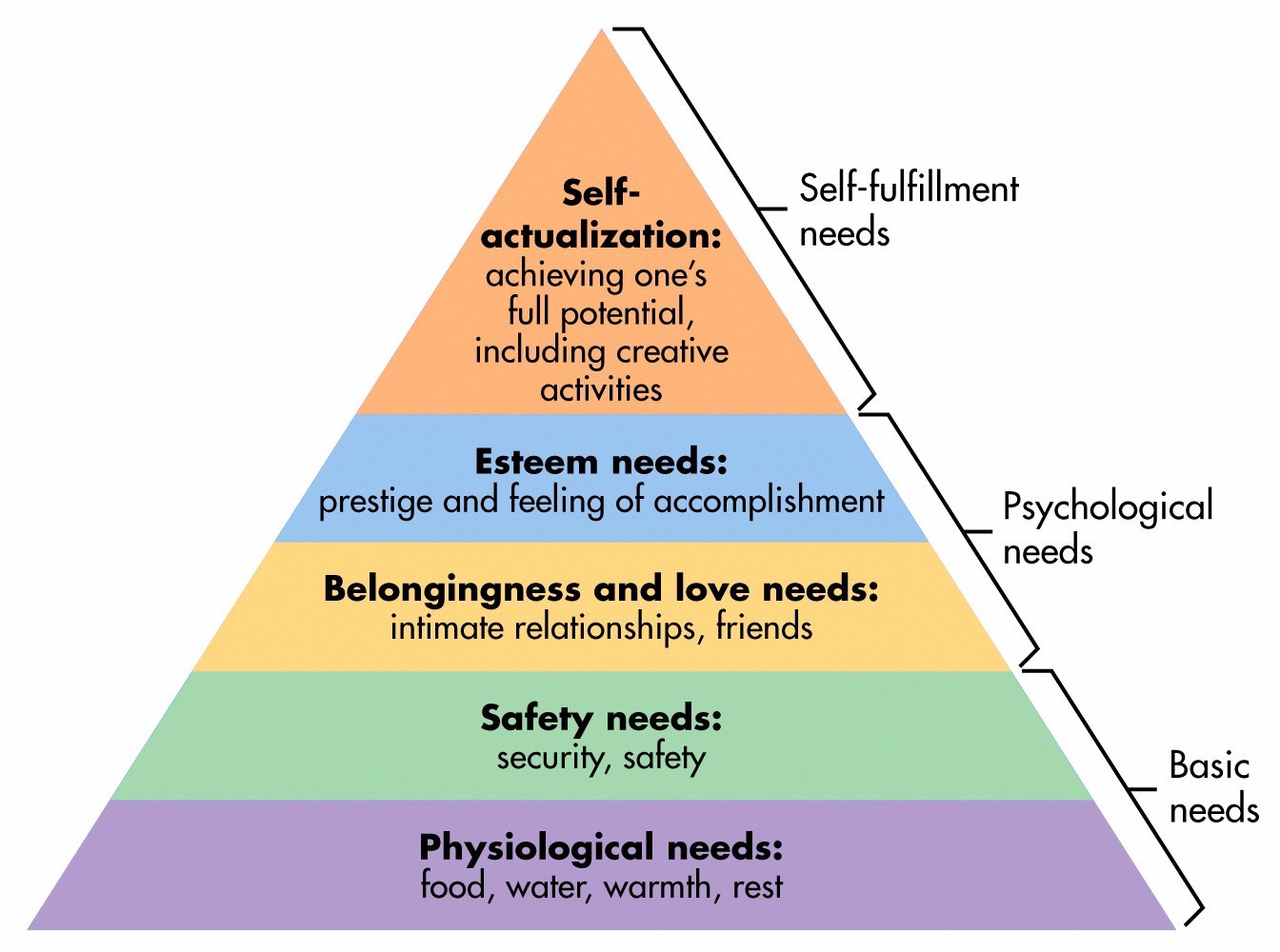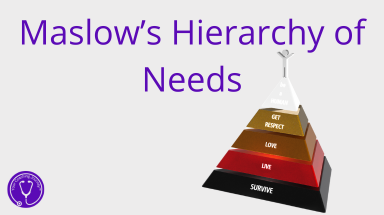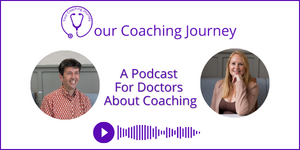Prefer to listen?
This blog post forms the basis of a podcast on our new coaching model, which you can listen to here.
The Theory and Background
Maslow’s Hierarchy of Needs is a theory of human motivation. What motivates us to do certain things. It was devised by Abraham Maslow, an eminent American psychologist, who died in 1970. He was doing most of his really good thinking in the ’40s, ’50s, and ’60s. He was a humanist, so very much a contemporary of Carl Rogers from the person-centred approach that we’ve talked about before. And, he was talking about positive psychology long before Martin Seligman introduced the idea in 1998.
In fact, Maslow was the first person that coined the term positive psychology. He was very much of the opinion that people got talked about as a bag of symptoms thought that, psychology should be focused on how people could thrive. He is considered in the world of positive psychology as one of it’s founding fathers prior to Martin Seligman.
The humanistic psychology movement was about harnessing inner resources, personal growth, and personal development, and moving towards what they termed self-actualization. This is the idea that people will seek to become their best self. Maslow asserts that, in order to get to that point, certain other requirements have to be fulfilled.
It’s a challenging concept to have of all people, that they will continue to develop and grow to be their best selves. Many people are quite happy not doing that. They’re happily, tootling along, no thought to personal growth or development. We live in a world where this idea occupies a lot of our thinking. Maslow was an academic, so lived in that world where people were trying to strive for better things and self-improvement. But it’s not how everyone thinks. So, maybe his theory is slightly coloured by his position in life.
Maslow’s Hierarchy of Needs theory is, now, represented in the form of a pyramid. Here’s a bit of interesting information, much like Kübler-Ross and the ‘change curve’, Maslow never used a pyramid in his original theory. He did, however, call his a model a hierarchy, which would suggest that each of these things do sit on top of each other, and why it’s been represented in this way.

Let’s go through our pyramid from the bottom.
Physiological Needs
So these are things like the fact that we need to eat. We need to sleep. We need to sleep somewhere safely. These are our basic physiological needs that we need, and without which, we won’t survive.
Safety & Security
Once our most basic needs are covered, then we start to worry about our safety and security needs. In the Western world, health, employment, having a roof over our heads, a bit of stability. We need a feeling that we are safe and secure.
Social Needs
This is our need for love and belonging, interacting and intimacy with other people. Friendships, family, intimacy, and connection fit in here
Esteem Needs
This is where we start to look at confidence, striving for achievement, gaining the respect of others,
Self-Actualisation
Once we’ve got those self-esteem needs sorted, then we might move on to self-actualization, which is a very grand term, but basically means you living your best life, being your best self. Definitely moving into a higher way of thinking about yourself. Living a life that is in line with your values, having meaning and purpose.
Discussing The Hierarchy of Needs
Some diagrams place family into safety and security needs rather than social needs, and if we think about it, there is a need to have people around you to provide security and safety within your group. We can’t survive on our own. Which raises an interesting point about whether the hierarchy is in the right order. Because, as infants, we cannot survive without our parents. Matthew Lieberman, who’s a social neuroscientist, would suggest that social needs should, in fact, be at the base of the pyramid.
Obviously, we can’t survive without water, we can’t survive without food, but we also can’t survive without other people.
Maslow may well have have argued that it’s not a pyramid where everything stays in its own level, there’s cross-over and fluidity. Maybe that’s why he never actually created a pyramid!
It’s always worth considering that not everything has to be fulfilled or satisfied in one level before you move on to the next one. You could say, I’ve got the basic food, but it’s not quite enough, but I’m still going to go out and move to that next level, perhaps in order that I can have more food.
Equally, if you don’t have food, you need to do everything you can to find food. Until that’s satisfied, you’re not going to worry too much about whether you’re upsetting the person next to you. You just need to find food to survive.
We would all like to think that if you had people around you and you didn’t have enough food, then someone else might help you out, or someone else might support you in some way.But we’ve seen enough news footage in recent times of war-torn countries where it’s a scramble to get food, and everyone is out for what they can get for themselves and their family.
Maslow’s hierarchy of needs is right in this respect though, it explains why someone might scramble for food when there’s a shortage, because it’s at the bottom of the pyramid of our needs. That’s the basic need and you’ve got to satisfy that before you move on to anything else.
Social vs. Esteem Needs
These two levels are interesting to give some thought to. The connections that we build with other people are important for love and belonging (social needs) and for us to feel able to move on to build our self esteem and confidence. It might be hard to find that self esteem and confidence if we don’t have a sense of social connection, of love and belonging. And for some, a lack of love and belonging drives their pursuit of achievements, which sit in that ‘esteem’ level. Some might ask, how do you have love and belonging if you don’t have self-esteem?
There’s also an interesting bit of opposition here, where self esteem and confidence is often related to striving out, and a need for individuality. You need to have that love and belonging and connection, but you also need to be your own person.
So this is a complex area that probably has a lot of fluidity and possibly conflict between the two areas, but would make a really interesting area to coach around for some clients.
This model may help to explain some social difficulties such as long-term unemployment. For example, where unemployment impacts not only the person’s basic needs, but their self-esteem is undermined, making it really difficult to find the confidence, and express their abilities when applying for work.
Creativity
Creativity comes in at the top of the pyramid, which I think a lot of starving artists pursuing their creativity can relate to. It may be why they need to take a different job in order to pay the bills, rather than pursue their creative endeavours. It’s possible to self-actualise in this way, but you will need to consider what you really need and the bottom end of the pyramid if, as a career, your creativity doesn’t provide you with sufficient funds.
Self-Actualisation
Self-actualisation was an interesting concept for Maslow to have explored because he picked particular people that he saw who were capable of self-actualisation. It was strange for a humanist. It was almost an elitist thing that in order to get to that self-actualization, you had to be a little bit special. Einstein was someone he saw as self-actualizing. Gandhi, Eleanor Roosevelt, were both people he saw as self-actualising. He had a very small clique of people that he identified with. He probably saw himself as being self-actualising as well. But it seems, it wasn’t really for the masses. And that becomes quite obvious once you put this hierarchy into a pyramid.
How might we use this in the coaching room.
It’s unlikely we’re going to be coaching someone who doesn’t know where their next meal is coming from because they’re coming for coaching. So that denotes that they’re already okay. However, we may be coaching in a sector where we are volunteering to work with those who coaching wouldn’t ordinarily be available to, and who are considering elements that most clients wouldn’t be as concerned about.
We do a lot of work in the world of health coaching. And health coaches that are employed by the NHS are quite often working with people that are struggling. They will have coaching sessions with people that perhaps are worried about where the next meal is coming from. If this is the case, we won’t want to be drawing it out and bring their attention to where they might be on the pyramid, that would be insensitive, they know what their struggles are. But as coaches, we might want to be considering this model while we are working with them.
It’s useful to have in your head as a coach. Where are these levels? Where am I meeting my coachee? For example, they’re coming to talk to me about confidence. But actually, we’re at this level where they are really struggling financially. They may need support at a more basic level.
But then if they are coming to talk about friendship, family, intimacy, it may well be that confidence, self-esteem are getting in the way of them getting out there to meet people. That could be interesting. They’re at a more basic level, but they need to actually think about how they’re viewing themselves, which is in the next one up.
And remember, it’s just one theory, which might be flawed, but could be useful. Let’s take a look at another concept.
Tony Robbins’ 6 Human Needs
- Certainty: assurance you can eat, avoid pain and gain pleasure
- Uncertainty/Variety: the need for the unknown, change, new stimuli
- Significance: feeling unique, important, special or needed
- Connection/Love: a strong feeling of closeness or union with someone or something
- Growth: an expansion of capacity, capability or understanding
- Contribution
All of these would be interesting areas for coaching.
Maybe someone has too much certainty, or not enough. Or it could be that someone doesn’t have significance in their life. To have a conversation with someone about what their significance is, and how they can increase that, or improve their social connections, these could be life-changing, and in some cases, life-saving.
Growth and contribution aren’t the same as self-actualisation, they help us to think more widely than that, and maybe, without quite the elitest tones of Maslow’s concept.
Beyond The Pyramid
Before he died in 1970, Maslow was working on a new, or perhaps, an extension to his, theory of needs. He died before he’d finished. But beyond self-actualisation, which was seen to be at the top of his hierarchy, he had the idea of a transpersonal element of our existence Thinking beyond ourselves. To some extent, he saw it as a bit spiritual. There’s maybe some element of peak experiences, or being in flow, where you just get lost in an activity, but there was definitely some mystical spiritual element to it that went beyond oneself. It’s connecting with a wider existence.
Along with others, Maslow found the transpersonal psychology movement just before he died. It wasn’t, as such, a movement away from the humanistic approach, but there was definitely something else going on for him that he was looking at more spiritual elements to existence.
Interestingly, John Whitmore, who wrote ‘Coaching for performance and is the person who established the G.R.O.W. model, as he progressed through his coaching, he moved more towards that concept of something beyond self and Transpersonal Coaching. There’s obviously a journey to be had there for some people.
Maslow’s work has been picked up by a researcher who has developed it and written a book about it. We’ll cover that another time, once Helen has read the book!
Going back to where we started, exploring Maslow’s Hierarchy of Needs as a tool that we might use in coaching. We probably won’t use it in the same way we would other models or theories, but it’s good to have an awareness of it so that we can actually think about people’s needs and what needs are not being met. But to not hold it too tightly.
And maybe Tony Robbins’ six human needs is a different way of looking at it. And maybe that’s something we can come to another time.
To find out more about our Doctors’ Transformational Coaching Diploma click through here



